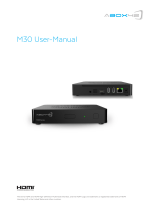FLOW 33 Manual Page 2 (total 43) COMAC CAL s.r.o.
Contents:
Description of device ............................................................................................................................. 3
Scope of delivery ................................................................................................................................ 3
Storage conditions ................................................................................................................................. 4
Warranty ................................................................................................................................................ 4
Installation in pipeline .......................................................................................................................... 5
Important information for selection of location ................................................................................. 5
Sources of disturbances ...................................................................................................................... 5
Installation examples .......................................................................................................................... 6
Actual installation in pipeline ............................................................................................................ 8
Installation check .............................................................................................................................. 15
Wiring .................................................................................................................................................. 16
Meter wiring ..................................................................................................................................... 16
Impulse output OUT1/OUT2 ........................................................................................................... 17
Status output OUT2 .......................................................................................................................... 18
Current output .................................................................................................................................. 18
Feasible output configurations ......................................................................................................... 18
BLUETOOTH service interface ....................................................................................................... 19
Wiring check .................................................................................................................................... 19
Putting into operation ......................................................................................................................... 20
Technical data ..................................................................................................................................... 22
Factory settings .................................................................................................................................... 24
Table with flow ranges for individual DN sizes ................................................................................. 25
Basic sensor sizes ................................................................................................................................. 26
Nomogram for quick proposal of the measured place ....................................................................... 30
Reduction in DN pipe .......................................................................................................................... 30
Failures and their symptoms during measurement ........................................................................... 31
Flow sensor cleaning ........................................................................................................................... 31
Service .................................................................................................................................................. 31
Order code ............................................................................................................................................ 32
Returning the meter to COMAC CAL s.r.o. ....................................................................................... 33
Supplement .......................................................................................................................................... 34
FLOW 33 BT Setup ......................................................................................................................... 34
Supplement .......................................................................................................................................... 40
FLOW 33XM ................................................................................................................................... 40




























